Themed collection Speciation Analysis

It is time for a special issue dedicated to elemental speciation analysis
Guest Editors, Heidi Goenaga-Infante and Gunda Koellensperger, introduce the 2016 speciation themed issue.

J. Anal. At. Spectrom., 2016,31, 1704-1705
https://doi.org/10.1039/C6JA90039A
Update on the status of metrology for metalloproteins
Metalloproteins, which represent about 30% of the total proteome, are often important markers for distinguishing between healthy and diseased states of patients.
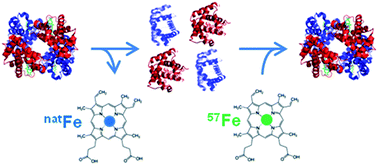
J. Anal. At. Spectrom., 2016,31, 1756-1765
https://doi.org/10.1039/C6JA00181E
Sample pre-treatment techniques for use with ICP-MS hyphenated techniques for elemental speciation in biological samples
This review will focus specifically on the state of the art of novel sample pretreatment methods which have been combined with ICP-MS based hyphenated techniques for elemental speciation in biological samples.
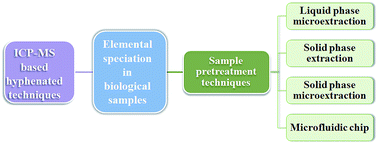
J. Anal. At. Spectrom., 2017,32, 58-77
https://doi.org/10.1039/C6JA00077K
Coupling electrophoretic separation with inductively coupled plasma spectroscopic detection: interfaces and applications from elemental speciation, metal–ligand interaction to indirect determination
Electrophoresis in capillaries/microchannels interfaced with inductively coupled plasma spectrometries shows great potential in elemental speciation and interaction with ligands, and indirect determination by taking advantage of both separation and detection.

J. Anal. At. Spectrom., 2016,31, 1780-1810
https://doi.org/10.1039/C6JA00206D
Monolithic chromatography in speciation analysis of metal-containing biomolecules: a review
Monolithic supports are efficient stationary phases for most of the important chromatographic separation modes.

J. Anal. At. Spectrom., 2016,31, 1766-1779
https://doi.org/10.1039/C6JA00121A
Turbulent flow chromatography in combination with HPLC-ICP-MS for high-throughput analysis of free, intact metal based drugs in biomedical samples
Turbulent flow chromatography is a powerful technique for efficient on-line separation of proteins from low molecular weight compounds.

J. Anal. At. Spectrom., 2016,31, 1811-1817
https://doi.org/10.1039/C6JA00108D
Visualization of As(III) and As(V) distributions in degraded paint micro-samples from Baroque- and Rococo-era paintings
Orpiment and realgar are two artists' pigments that appear not to be stable upon light exposure, quickly degrading to arsenic trioxide and arsenate. Their identification appears challenging but can be overcome by the use of synchrotron based techniques such as μ-XANES.
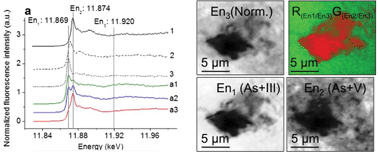
J. Anal. At. Spectrom., 2016,31, 1913-1921
https://doi.org/10.1039/C6JA00134C
Accurate quantification of selenoproteins in human plasma/serum by isotope dilution ICP-MS: focus on selenoprotein P
Systematic approach for the accurate quantification of selenoproteins (SEPP1) in human plasma/serum by IDA-LC-ICP-MS.
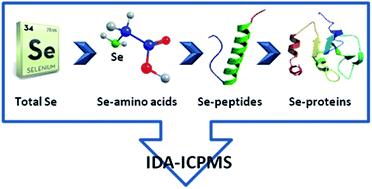
J. Anal. At. Spectrom., 2016,31, 1904-1912
https://doi.org/10.1039/C6JA00122J
HPLC-ICP-MS for simultaneous quantification of the total and active form of the thioredoxin reductase enzyme in human serum using auranofin as an activity-based probe
Thioredoxin reductase 1 (TrxR1) is a cytosolic and extracellular enzyme involved in cellular redox homeostasis and other important biological functions for cell survival.

J. Anal. At. Spectrom., 2016,31, 1895-1903
https://doi.org/10.1039/C6JA00068A
Determination of free methionine in human blood plasma by species-specific isotope dilution HPLC-ICP-MS using 34S-labelled methionine
Determination of free methionine in human blood plasma by HPLC-ICP-MS using 34S-labelled methionine as species-specific spike.
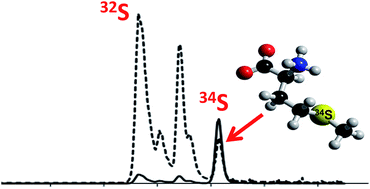
J. Anal. At. Spectrom., 2016,31, 1885-1894
https://doi.org/10.1039/C6JA00125D
Quantification of pharmaceutical peptides in human plasma by LC-ICP-MS sulfur detection
Quantification of pharmaceutical peptides in human plasma by RP-LC-ICP-MS and post column isotope dilution.
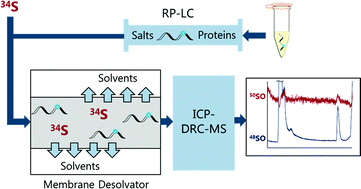
J. Anal. At. Spectrom., 2016,31, 1877-1884
https://doi.org/10.1039/C6JA00132G
Arsenic containing medium and long chain fatty acids in marine fish oil identified as degradation products using reversed-phase HPLC-ICP-MS/ESI-MS
This study describes the identification and quantification of five new arsenolipids present in raw marine fish oil extracted mainly from Peruvian anchoveta (Engraulis ringens).
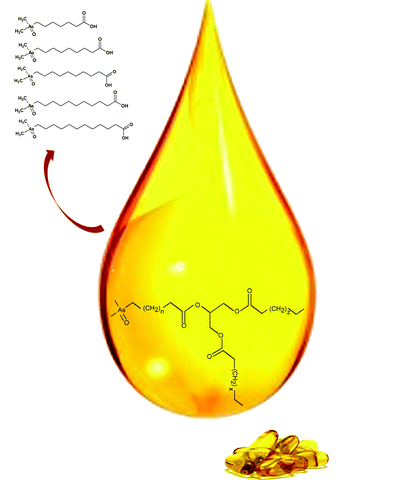
J. Anal. At. Spectrom., 2016,31, 1836-1845
https://doi.org/10.1039/C6JA00162A
Field flow fractionation online with ICP-MS as novel approach for the quantification of fine particulate carbon in stream water samples and soil extracts
The capability of FFF online with ICP-MS detection was extended to the determination of particulate carbon via validation against FFF-OCD.
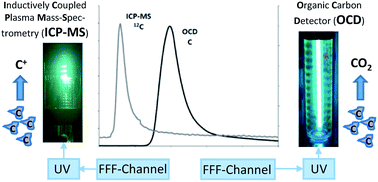
J. Anal. At. Spectrom., 2016,31, 1858-1868
https://doi.org/10.1039/C6JA00027D
Interfacing monolith-based electrochromatography in microchips with inductively coupled plasma mass spectrometry for elemental speciation
This work demonstrated the coupling of monolith-based electrochromatography in microchips with ICP-MS for elemental speciation.

J. Anal. At. Spectrom., 2016,31, 1869-1876
https://doi.org/10.1039/C6JA00112B
Preparation and characterisation of an 57Fe enriched haemoglobin spike material for species-specific isotope dilution mass spectrometry
A species-specific ID-ICP-MS method for intact haemoglobin was developed applying an 57Fe enriched haemoglobin spike, which was prepared and characterised carefully.
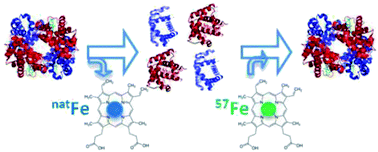
J. Anal. At. Spectrom., 2016,31, 1846-1857
https://doi.org/10.1039/C6JA00028B
In vivo synthesized 34S enriched amino acid standards for species specific isotope dilution of proteins
Production of 34S enriched amino acids using yeast.

J. Anal. At. Spectrom., 2016,31, 1830-1835
https://doi.org/10.1039/C6JA00039H
Complementary HPLC-ICP-MS and synchrotron X-ray absorption spectroscopy for speciation analysis of chromium in tobacco samples
This paper provides first quantitative speciation data for chromium in tobacco and tobacco smoke by using complementary HLPC-ICP-MS and XANES.

J. Anal. At. Spectrom., 2016,31, 1818-1829
https://doi.org/10.1039/C5JA00442J
Element labeling of antibody fragments for ICP-MS based immunoassays
This work introduces and evaluates the use of recombinantly produced antigen binding fragments (Fab) for ICP-MS based immunoassays.
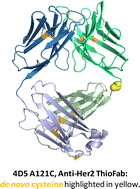
J. Anal. At. Spectrom., 2016,31, 2330-2337
https://doi.org/10.1039/C6JA00252H
[Sec-to-Cys]selenoprotein – a novel type of recombinant, full-length selenoprotein standard for quantitative proteomics
In this work, we present the first methodical approach to the preparation, molecular characterization and use of a novel type of full-length human selenoprotein standard.
![Graphical abstract: [Sec-to-Cys]selenoprotein – a novel type of recombinant, full-length selenoprotein standard for quantitative proteomics](/en/Image/Get?imageInfo.ImageType=GA&imageInfo.ImageIdentifier.ManuscriptID=C6JA00123H&imageInfo.ImageIdentifier.Year=2016)
J. Anal. At. Spectrom., 2016,31, 1929-1938
https://doi.org/10.1039/C6JA00123H
Accurate and precise quantification of Cu,Zn-SOD in human red blood cells using species-specific double and triple IDMS
Species-specific double and triple isotope dilution mass spectrometry (IDMS) was applied for the precise quantification of Cu,Zn-SOD in human erythrocytes.
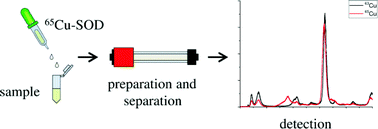
J. Anal. At. Spectrom., 2016,31, 1922-1928
https://doi.org/10.1039/C5JA00459D
About this collection
A themed collection showcasing the most outstanding work in speciation analysis. Guest edited by Professor Gunda Koellensperger and Dr Heidi Goenaga-Infante, this issue is dedicated to the newly emerging work in this exciting area of research.